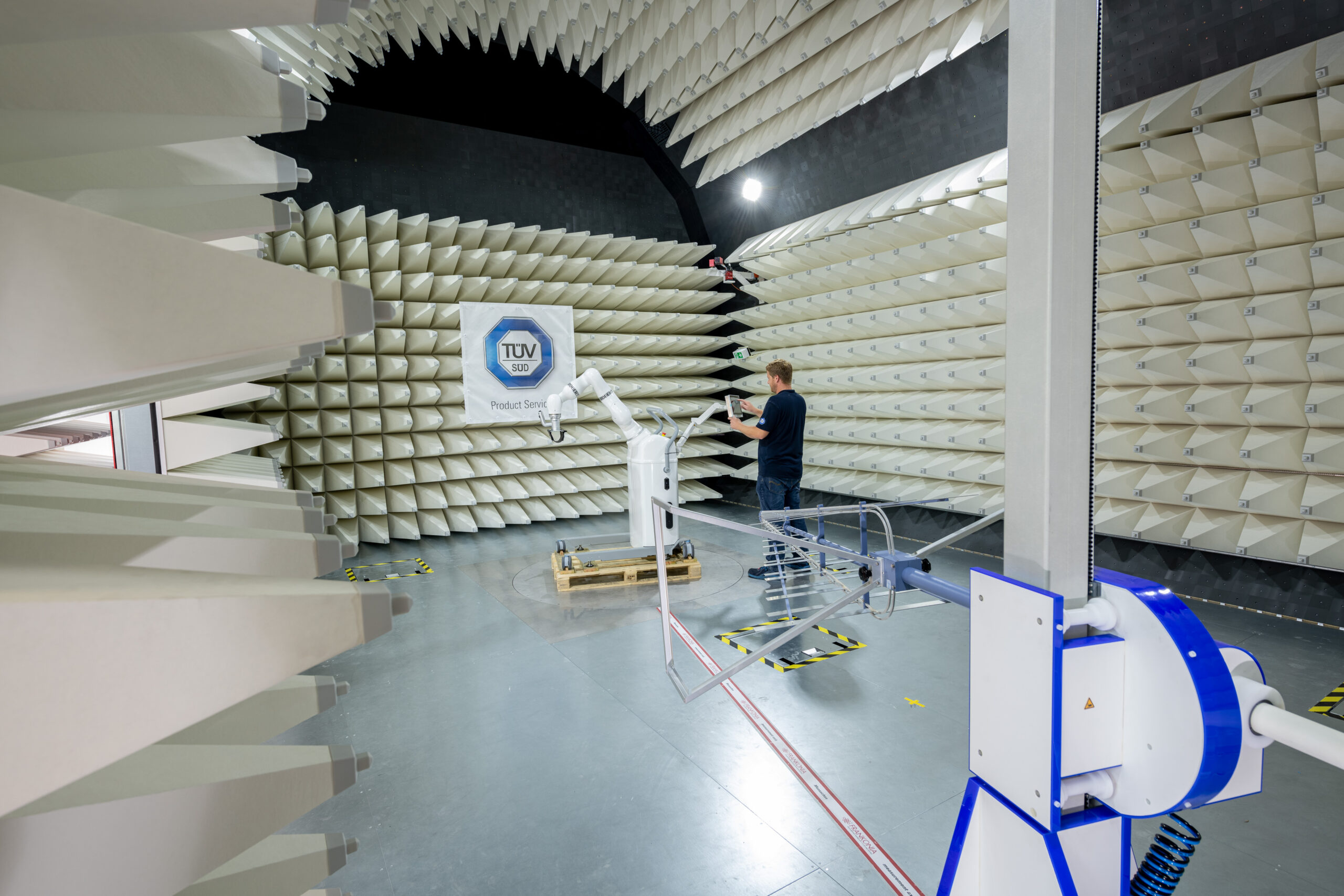Wireless medical devices make patient care safer and more efficient. They eliminate tripping hazards that may endanger both medical staff and patients. Secondly, the digital connection of various devices elevates monitoring and diagnostics to a higher level, significantly enhancing reliability in surgery and other medical areas. Wireless medical devices are also easier to clean, service and maintain because they automatically monitor the relevant intervals themselves.
Because of their high level of usability, effectiveness, and efficiency, wireless medical devices have become firmly anchored in today’s modern medicine. However, in most cases innovative technical solutions also require new technical standards. This particularly applies to wireless medical devices because they are also considered radio devices, as radio technology, including RFID, Bluetooth and WiFi interfaces that supply the connectivity between devices, is a key element of wireless products. Therefore they must comply with all related national regulations.
The national requirements for approval of radio equipment differ greatly across the key international markets. Medical devices cannot obtain access to these markets unless proof can be shown of their compliance with the national regulatory wireless requirements. To this end, they undergo a standardized procedure that concludes with the approval certificate issued by the responsible national authority. In most cases, this certification includes the obligation to affix a marking to the equipment and add a note in the instructions for use (IFU) or user manual.
Conformity Assessment of Radio Equipment in the EU
Key markets, including the EU, the U.S., Canada, Japan, South Korea and Taiwan, either have their own national regulations governing wireless medical devices or they use specific radio-equipment regulations. In the EU market, for example, Radio Equipment Directive (RED) 2014/53/EU applies. The Directive focuses on trade aspects, but also considers technical requirements.
Unlike other countries or economic areas, the EU does not define explicit rules for separately installed radio modules in its RED 2014/53/EU. Consequently, radio modules are subject to the same rules as any other type of radio equipment. “Modular approval” is thus possible. However, the radio module must fulfil all requirements of RED 2014/53/EU. Every medical device containing a radio module must undergo assessment in accordance with Directive 2014/53/EU. This sets the EU apart from other countries and/or economic areas that maintain explicit rules for this “modular approval”.
Important in this context are the essential requirements set forth in Article 3 of the RED, including protection of health and safety (Article 3.1a), an appropriate level of electromagnetic compatibility (Article 3.1b) and the effective use of the radio spectrum (Article 3.2). In addition, there are obligations to be fulfilled by the manufacturers and the respective economic operators, such as CE marking, alongside other obligations in accordance with Article 10 of the RED 2014/53/EU. If a radio module complies with these requirements, a declaration of conformity can be issued and the device placed on the EU market.

Shielded from electromagnetic interference, an EMC anechoic chamber offers ideal conditions for the testing of radio equipment. Photo credit: TÜV SÜD.
Testing Radio Modules in Accordance With Their Intended Use
The requirement defined in the Directive to test radio equipment in accordance with its intended use and application is a challenging one. While it is seemingly easy for traditional radio equipment, the module manufacturer may have difficulty narrowing down the intended use of radio modules installed and used in different types of equipment.
Relevant information for this process includes the module manufacturer’s instructions for installation, as well as the manufacturer’s declaration including the relevant test standards and their version numbers. On the basis of this information, the installer can judge which voltage and temperature ranges and which antennas have already been assessed by the module manufacturer, and which tests or assessment still need to be performed by the medical device manufacturer installing the radio module.
Every New Intended Use Creates a New Radio Device
A CE marking on a radio module does not guarantee compliance with certain limits or standards of the finished product. The CE marking indicates that the radio module per se complies with the necessary standards, limits, and other requirements. If a company now decides to install the radio module in its device, the company is building a completely new radio device. Up to that stage, the finished product may only have been assessed for conformity with the MDD 93/42/EEC, including its safety and electromagnetic compatibility (EMC) aspects. However, with the installation of the radio module, the new product now also falls under the scope of the RED 2014/53/EU so that the manufacturer must assess and furnish proof of the conformity with this directive. This means that all applicable standards and basics of the RED now also apply and have to be fulfilled by the manufacturer of the host product.
Under certain conditions, the installer will not have to complete all radio tests in full, but can use the test results achieved by the module manufacturer. However, it is recommended to perform at least partial tests, such as those for spurious emissions in accordance with the applicable radio standard. Device manufacturers should also take account of receiver testing based on a new housing, because the addition of a new antenna may change the radio performance. A device generally also has other functions that are not connected with radio operation; these functions must be tested and assessed in accordance with the applicable EMC or safety standards. Sometimes the results from EMC product standards can be adopted, so that testing need only address the specific requirements applicable to radio EMC.
The requirements governing the exposure of persons as set forth in Article 3.1 (a) of the RED must also be taken into account. In this case, the assessment of RF exposure from previous tests of the module may be adopted provided that certain requirements are fulfilled, such as a minimum distance of 20cm between the device and a person. However, these specific aspects or differences should be precisely defined by the manufacturers of medical devices, given that they are ultimately responsible for the issuance of a declaration of conformity confirming that their devices fulfil all of these standards and requirements. In any case, access to the test reports of the radio module is certainly helpful. Liability rests with the manufacturers of the finished device, even if they do not reproduce every test identically.
Notified Bodies or Accredited Testing Labs Offer Support
Notified Bodies or accredited testing laboratories can help interpret and optimize the results of previous tests. The example of the RED shows how complex the approval of wireless medical devices can be because of their radio components. Even though regulations differ across important sales markets, the approval processes and requirements are still comparable (see info box below). Licensing is faster in markets where modular approval is possible. And working with already approved radio modules may speed up placing a device on the market, even in those countries that do not allow modular approval.
Nevertheless, use of an already approved radio module is a complex process for which product designers and quality managers need to know the requirements of the respective market and understand the functions in detail. Notified bodies and accredited testing laboratories have in-depth knowledge of both the legal and technical status of wireless medical devices across many countries and regions of the world. Their services can offer important support to companies that supply wireless medical devices, thereby contributing to medical progress.
Key requirements for wireless medical devices at a glanceThe following requirements for successful approval apply internationally:
|






